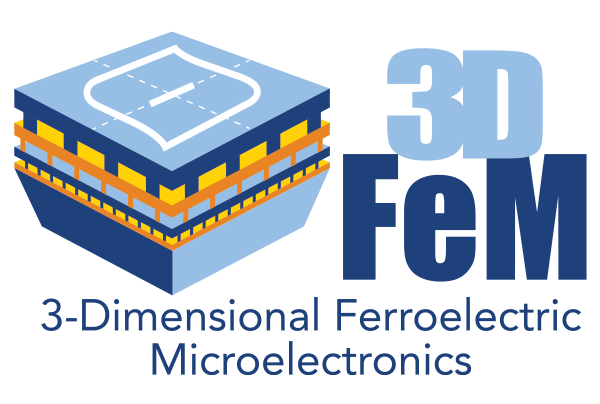
MISSION
3DFeM2 works to integrate ferroelectric films at the required scale and reliability for 3D memory using next-generation manufacturing practices. We will implement digitalized processing instruments to generate large data sets, use physics-based ML to reduce experimental dimensionality, identify descriptors that can be monitored to assess properties in real time, establish autonomous experiments to expedite optimization, and develop digital twins that multiply predictive power.
VISION

OBJECTIVES
3DFeM2 will employ a data-driven co-design approach that overcomes the enormous obstacles for integrating new materials and realizing the lab-to-fab transition. In the process, we will transform semiconductor manufacturing practices while solving a critical societal energy challenge.
To complete this mission, 3DFeM2 will develop in situ monitors for materials and devices during synthesis, integration, and service, linking experimental observables to material properties through physics-based models, establishing a feedback loop to optimize for properties and reliability in real time, and empowering automated experimentation. The resulting processing descriptors will be employed in ML models that reduce the dimensionality of fabrication space. Ultimately, we must understand how a new material affects the device and how a device and its processing affect the material at all levels.
3DFeM GUIDING QUESTIONS
- How can ferroelectricity be obtained in 3D-integration-enabling materials?
- How can materials be made far from equilibrium (an essential component of BEOL integration) using synthesis routes consistent with 3D integration and aggressive scaling?
- How can new devices leverage the cooperative nature of ferroelectricity, and can the cooperative nature of ferroelectricity be tuned for specific device requirements?
- Can new properties, such as ferroelectric quantum critical points; superconductivity; and spin, charge, or orbital ordering, enable novel devices?
- How can intrinsic or engineered properties of ferroelectric materials and devices enable novel compute-in-memory processors?